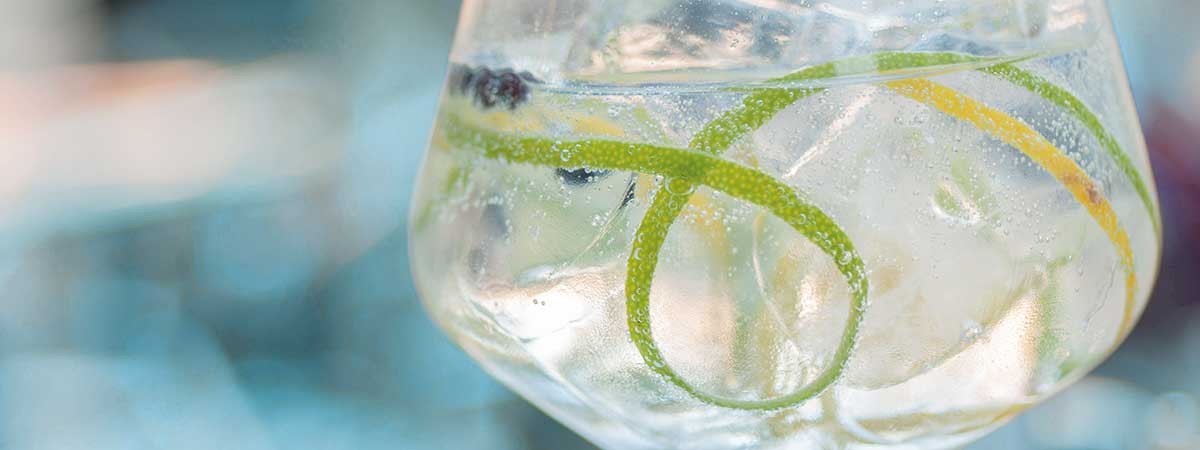Experimental distilleries have completely transformed the image of this classic spirit, bringing it into the modern age. There are now countless types of gin, and no two varieties taste quite the same. Vacuum distillation makes it possible for the variety to grow even further.
A few years ago, it was still easy to order a simple gin and tonic. There were no more than two or three kinds of gin on the shelf, and it was usually just the house brand that ended up in the long drink. Today, you are faced with a difficult decision. Sophisticated bars offer as many as fifty or sixty varieties. The revival of bar culture has breathed new life into this classic adult beverage. Creative master distillers have produced a wide variety of flavors and turned gin into a trendy drink.
Juniper and botanicals
The distinctive feature of gin is and remains the distinctive hint of juniper. After all, its name goes back to juniperus, the botanical name for juniper. Its main component is simple pure alcohol, which can come from cereals, molasses or wine marc.
Unlike whisky, rum or vodka, the specific flavour is not created by special spring water or long storage. The distiller composes the gin's special taste using what are known as botanicals. These are aromatic plant ingredients that the distiller adds to the basic recipe: juniper berries, of course, plus other spices, herbs, fruits, flowers, bark, roots, and other things. Sometimes five, sometimes 47 botanicals refine the spirit. A particularly experimental British distillery even produces a variation with the extract of forest ants, which is said to give their "Anty Gin" special hints of citrus.
Vacuum preserves flavor
Traditionally, there have been two ways to infuse the taste of botanicals into the gin. During maceration, they are placed in the base alcohol diluted with water. The liquid is then steeped in juniper berries and other flavours, which can take up to several weeks. This "bog" is then distilled. In percolation, however, the botanicals only come into contact with the alcohol during the distillation process: they hang in sieves or baskets in the still. The rising alcohol vapour penetrates them and extracts their flavouring substances.
In conventional distillation, the alcohol is heated above its boiling point of 78 degrees Celsius. Sensitive flavors would suffer from such a process – or be lost completely. However, vacuum pumps can be used to create vacuum in the still and lower the boiling point to room temperature. As a result, the botanicals' original flavors can be transferred to the finished distillate with barely any changes (or even none at all), allowing the gin to become a surprising taste experience.

The distillery's aromatic surprise
Creative vacuum turns gin into an adventure in taste
How did genever become gin?
The origins of gin are in the Netherlands and Belgium. As early as the 16th century there was a juniper spirit called genever, derived from the Dutch or French term for juniper (jeneverbes, genévrier). The spirit was a popular remedy for an upset stomach, though it was surely not just a digestif after a sumptuous meal.
Genever arrived in England in the 17th century in the luggage of English troops who had been fighting in the Spanish-Dutch war. Under the name 'gin' – the name was easier to pronounce – it soon became a fashion there, soon after becoming a drink for the masses. During the gin epidemic, alcohol addiction became widespread and the word gin became synonymous with cheap booze.
With the rise of the British Empire, the image of the spirit gradually changed and its quality also improved. In colonies where quinine was recommended for malaria and lemon juice for scurvy, the bitter-sour medicine was mixed with gin to create the long drink classics of gin and tonic and gin fizz.
Even today, gin and genever are similar. However, real genever always originates from the Netherlands, Belgium and parts of northern France. It is usually made from barley or rye malt and mainly flavoured with juniper, but also anise, caraway and coriander.
The origins of gin are in the Netherlands and Belgium. As early as the 16th century there was a juniper spirit called genever, derived from the Dutch or French term for juniper (jeneverbes, genévrier). The spirit was a popular remedy for an upset stomach, though it was surely not just a digestif after a sumptuous meal.
Genever arrived in England in the 17th century in the luggage of English troops who had been fighting in the Spanish-Dutch war. Under the name 'gin' – the name was easier to pronounce – it soon became a fashion there, soon after becoming a drink for the masses. During the gin epidemic, alcohol addiction became widespread and the word gin became synonymous with cheap booze.
With the rise of the British Empire, the image of the spirit gradually changed and its quality also improved. In colonies where quinine was recommended for malaria and lemon juice for scurvy, the bitter-sour medicine was mixed with gin to create the long drink classics of gin and tonic and gin fizz.
Even today, gin and genever are similar. However, real genever always originates from the Netherlands, Belgium and parts of northern France. It is usually made from barley or rye malt and mainly flavoured with juniper, but also anise, caraway and coriander.